The Equal Pay Act
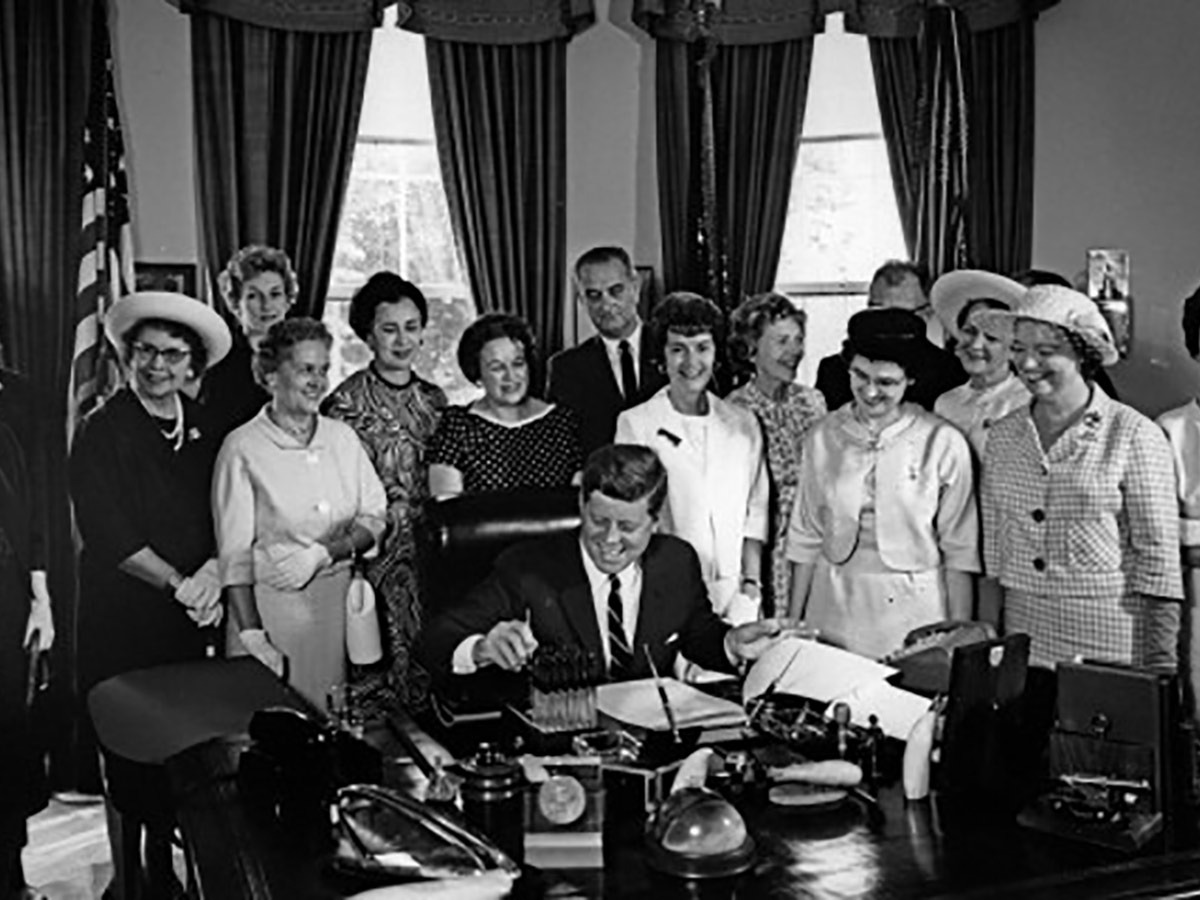
Today, there’s still a large gap between men and women in the workforce. CNBC reported that women earn just 79 cents for every dollar a man makes, making this photo even more chilling. Here we see John F. Kennedy signing in the Equal Pay Act into law.
While the bill surely helped somewhat, there’s still a major gap in pay between men and women, especially for women of color. The bill just created consequences for companies if the employee can prove they were being paid less than their male counterparts.
Suffragette Alice Paul

This image is none other than Alice Paul, one of the most prominent suffragettes in history. From a young age, she attended suffragist meetings with her mother and continued to fight for women’s rights for decades.
After Elizabeth Cady Stanton and Susan B. Anthony’s death, she really revved the movement back up. Paul founded the National Women’s Party. After protests, marches, and demonstrations, the NWP started to make headway and gain popular support. Four years later, the 19th Amendment was ratified to give women the right to vote.
D.C. 1969 White House Protests

While looking at images of the Women’s Rights Movement, protesting in front of the White House is a pretty common one. This one dates back to 1969 when the National Organization of Women performed a demonstration to give women equal rights and autonomy over their own body.
Specifically, they're asking for the passage of the Equal Rights Amendment. It proposed that there would be legal rights for all American citizens regardless of their sex. It sought to end the legal distinction between men and women regarding property, divorce, employment, and other matters.
Bra Burning

The bra-burning movement began during the Miss America Pageant in 1968. It started in Atlantic City and spread like wildfire across the nation (pardon the pun). Women burned hairspray, makeup, girdles, and much more – all items that “enforced femininity.” Actual bra-burning was rare, but it became the symbol of the movement.
The protests began through 1969, and that’s when this photo was taken. Instead of burning, most women decided to go braless as a way to reject traditional views of femininity. This was a San Francisco protest, but this was a nationwide phenomenon.
Equal Rights March
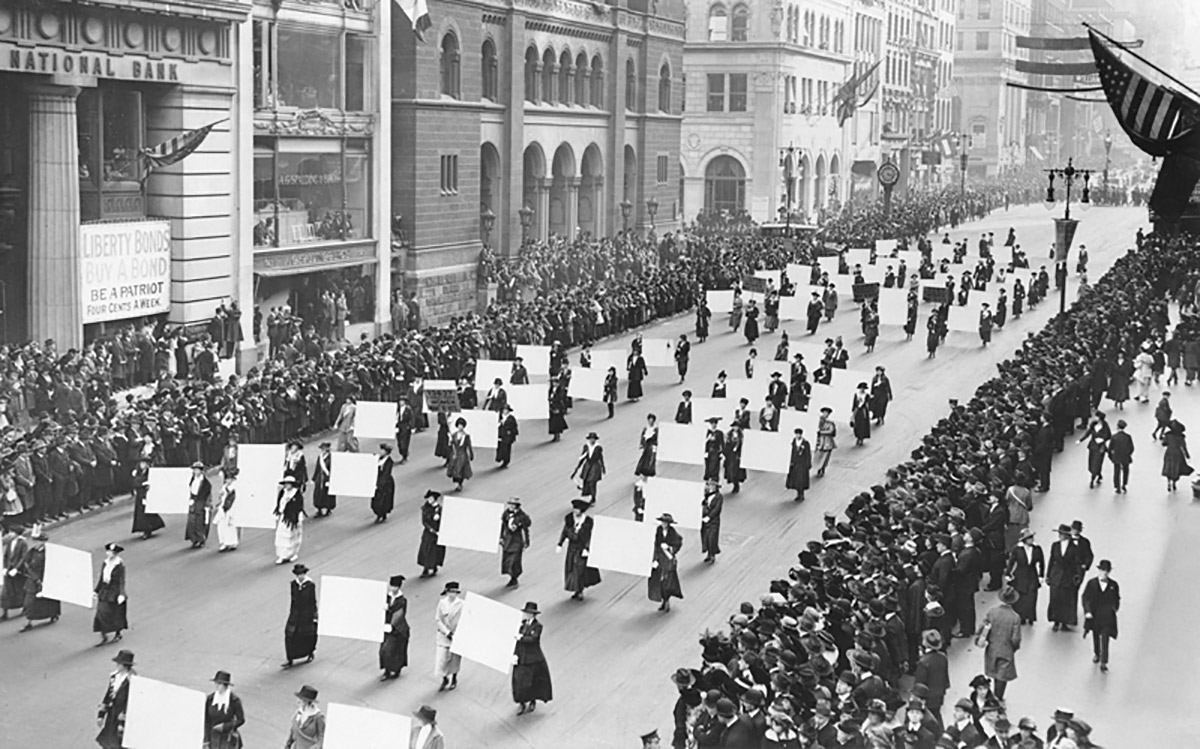
It’s hard to believe that women haven’t always had the right to vote. This photo was captured in 1917, a little over 100 years ago. That right to vote didn’t come easily, despite the fact, so many women (and men) supported the effort.
This photo shows the sheer number of women that wanted to elect their officials (no taxation without representation, ya know?). There aren’t many suffragists in this New York Parade, but they’re carrying place cards for more than a million women. It took three years after this for women to gain the right to vote.
Canada Bra Burning

The feminist movement didn’t go away after the right to vote was established in 1920, nor did it go anywhere after the Equal Pay Act was passed in ’63. Women have continued to protest over the years, asking for the same rights they would give any other man.
This Canadian movement features bra-burning again, but it was about more than just fighting feminist symbols. It was also about abortion and rape laws. It’s become quite obvious that the criminal justice system goes easy on rapists, no matter their actions. According to RAINN, only 6% of rapists ever spend a day in jail.
Protestor Holding Signage
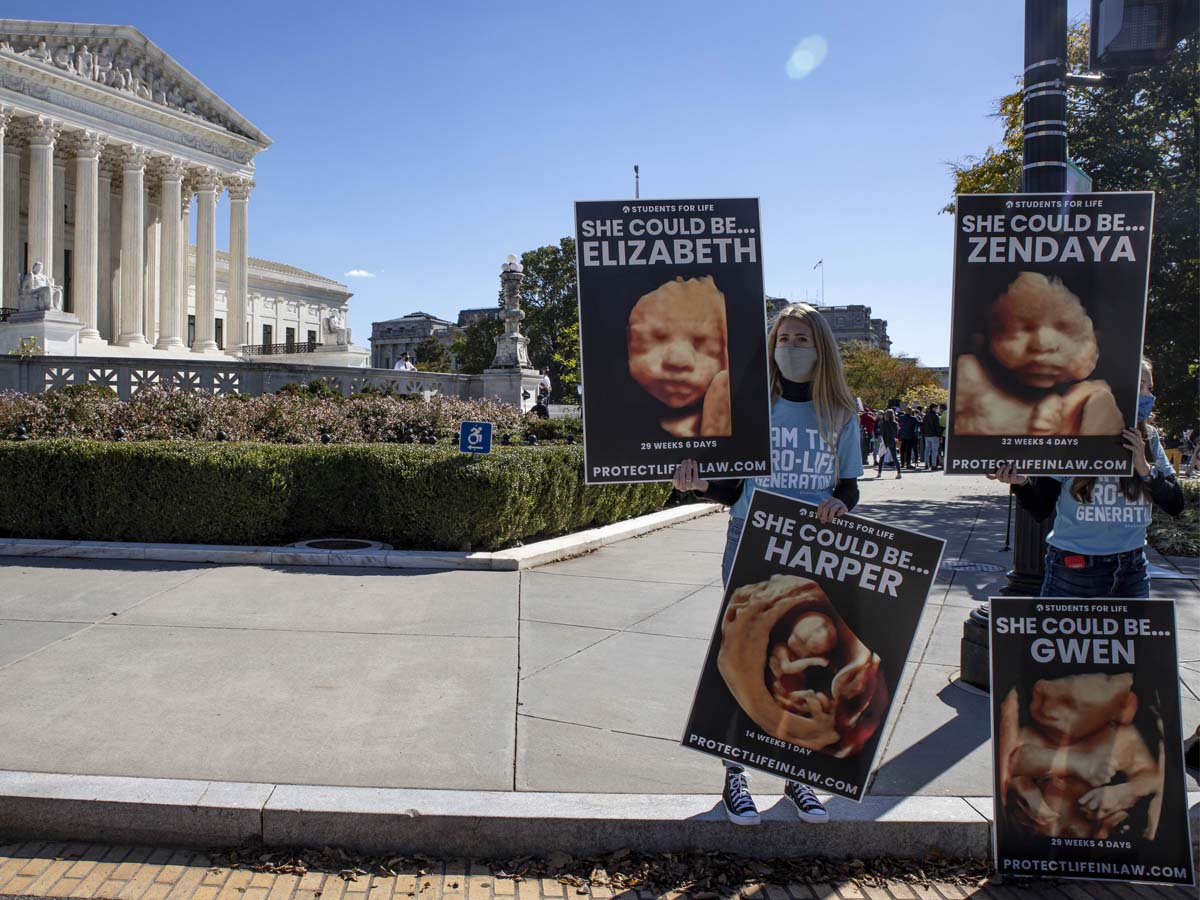
During many marches, anti-abortion protestors will show up to announce their side of the argument. These signs were held up during the Women’s March, which was being held in opposition of ex-president Trump. After Ruth Bader Ginsburg passed, Trump elected a justice that went against everything RBG stood for.
The march started in Freedom Plaza and continued to Supreme Court and lasted from 11 AM to 5 PM. These protestors stood at the very end (rather than walking the whole way and listening), holding up signs protesting abortion.
Suffragette Arrested

As we all know, the right to vote and equal rights were very difficult things to achieve. Many women fought for the rights that we have today. This is the picture of a suffragette who was arrested on what’s known as “Black Friday.” In 1910, a bill was introduced to allow a measure of women’s suffrage in national elections.
The bill was shot down, and women were furious – specifically the Women’s Social and Political Union. They quickly organized a protest march but were met with lines of police and male bystanders. The following attack was so brutal that it went down in history as “Black Friday” – not quite the meaning we know today. Here we see one of the women being arrested.
The Force-Feeding Of Suffragettes
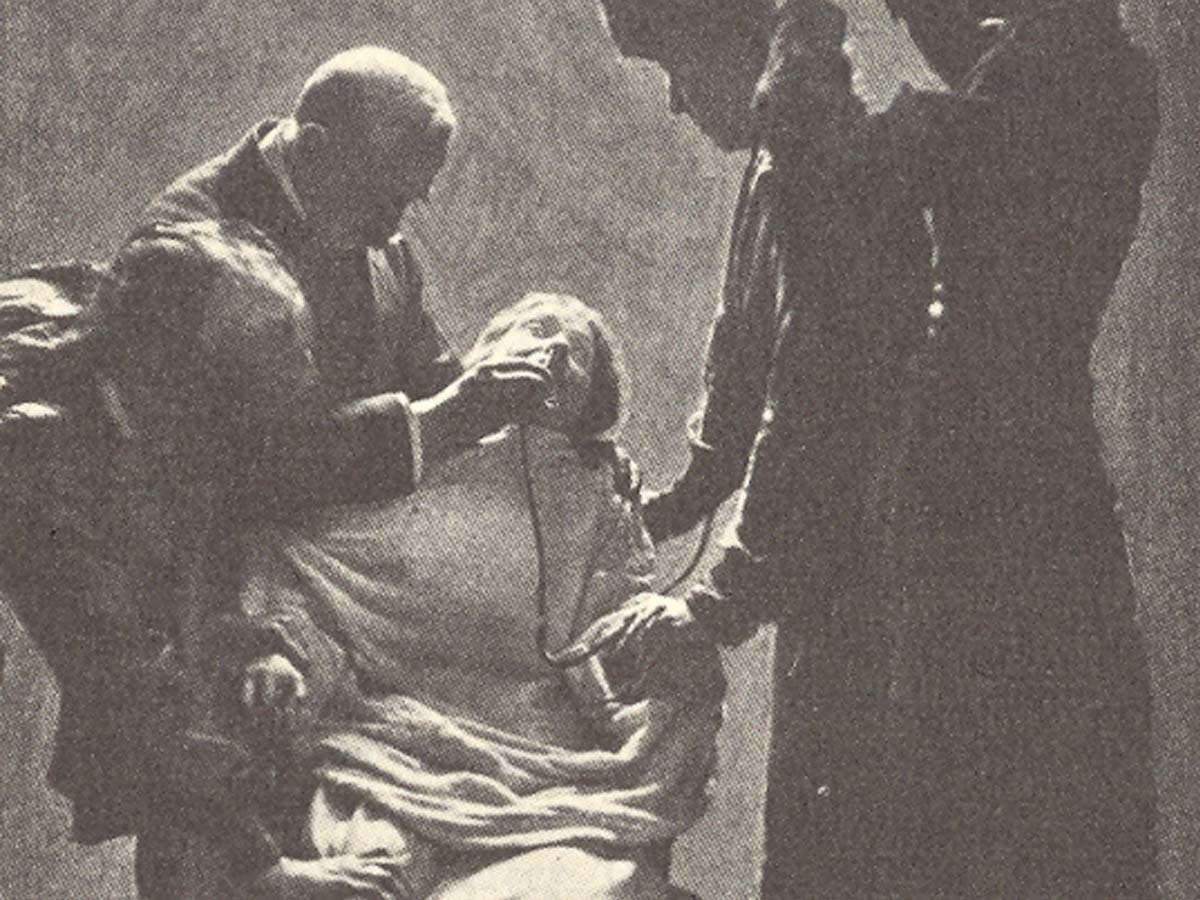
The suffragettes that were arrested, many of whom were detained during Black Friday, didn’t have it easy. Some were lucky enough to be released, but many were denied bail to be held in squalid conditions.
In the act of protest, some decided to go on a hunger strike. The solution? Force-feeding. Tubes were stuck down their throats or their nose. It was extremely painful. Sometimes, a steel ball gag would be put in place to keep their mouths open.
Black Friday 1910
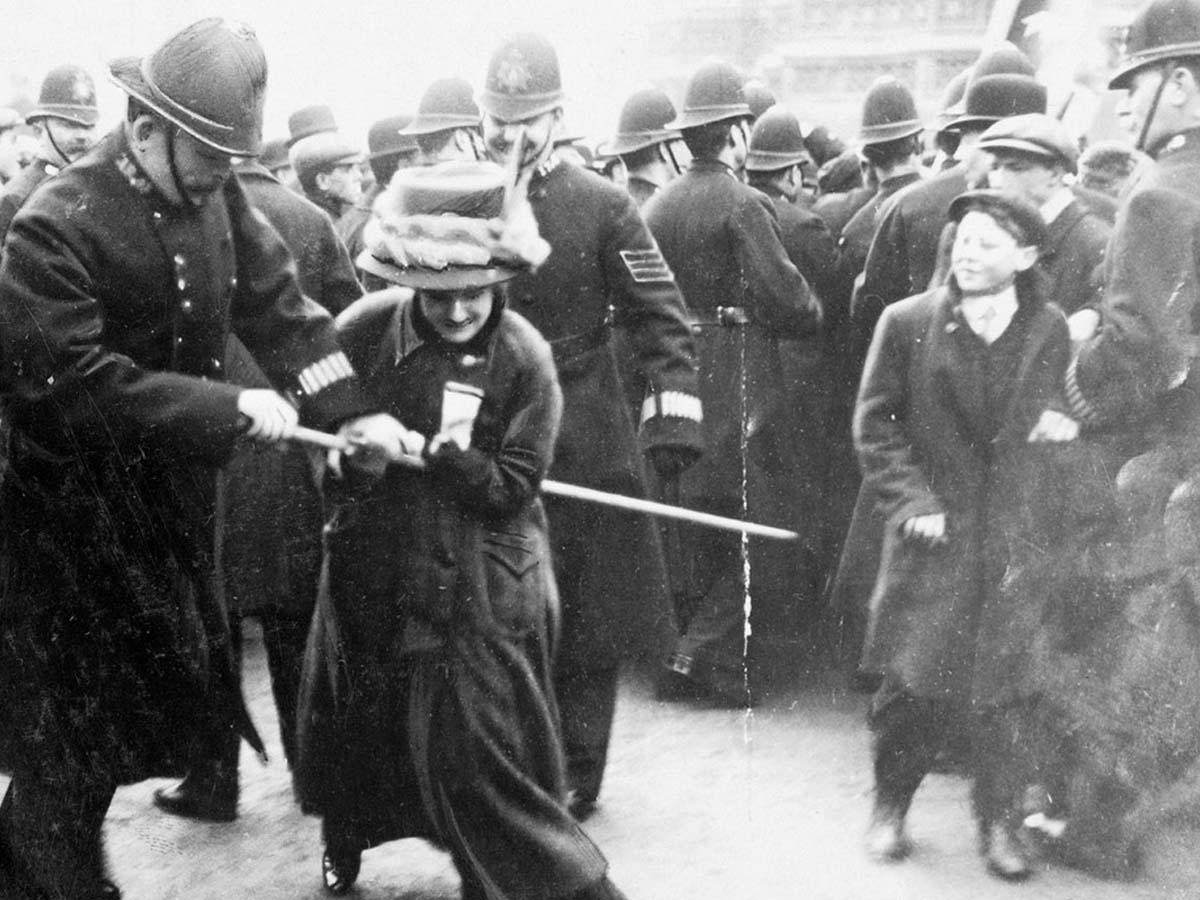
We know Black Friday as something entirely different today. However, in 1910, it marked the day where women were beaten and detained by police and male bystanders who opposed women’s rights. The whole thing lasted six painful hours.
In that time, 115 women and 4 men were arrested, although most were released the following day. Reports say that some women were sexually assaulted during this time. There were calls for a public inquiry, but Winston Churchill, then Home Secretary, rejected it.
Old Anti-Suffragette Card

Any time there’s a movement, there’s always opposition. Today, we have memes that make fun of the opposite side, but they didn’t have the internet in the early 1900s. This was their version of a meme – a card depicting what men thought the women’s opposition movement was about.
In plain English, the card reads, “All womankind now wants their rights. The female world has suffered long enough. I, for one, am ready to strike to make a man my slave is what I like.” Clearly, women didn’t want to make men their slaves. They just wanted the right to vote, equal pay, and the right to be more than a mother, maid, and cook.
Vinegar Valentines

These little comics were referred to as “Vinegar Valentines.” They were crass insults that were lobbed at various types of people. This particular card dates back to the 1840s, and it equated women’s rights to fussing over their hair.
In plain English, this card reads, “While you ladies seem bent on getting a-head, as your ‘woman’s rights’ fighting’s declare, we men are believing you’ll find out instead, that your fussing will all end in ‘air (hair) such a coiffeur (hairdresser) you offer no lovers will win, your heads so well furnished.” It was all about belittling women for requesting equal rights.
The Daily Mirror's Cover Page
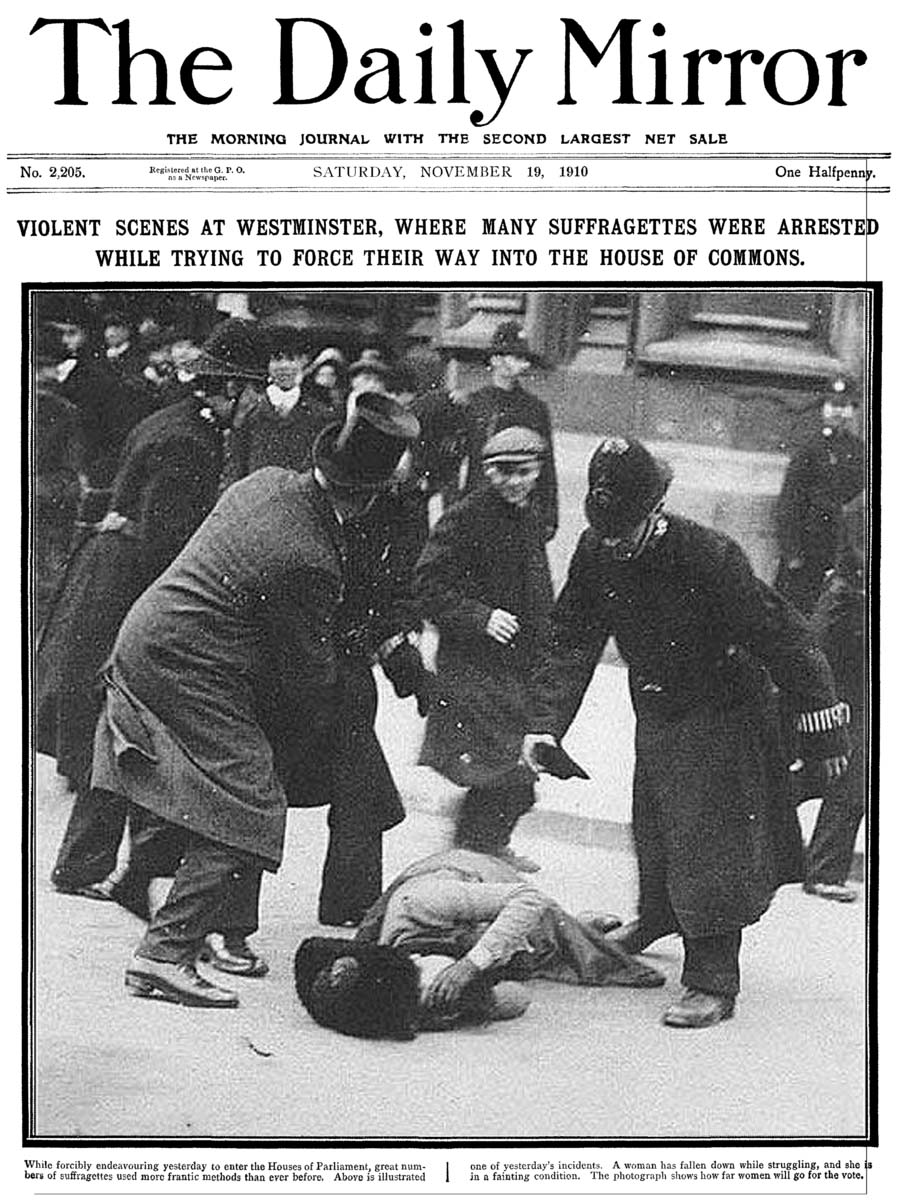
This newspaper clipping was the cover page of The Daily Mirror after the 1910 Black Friday event. For six hours, women were beaten – even if they weren’t doing anything or had surrendered. Some managed to crawl away, only to be shoved back into the fray.
The testimony of some women can still be heard today. Sylvia Pankhurst, a well-known suffragette, wrote down what happened, saying that “the cry went round, ‘Be careful! They’re dragging women down the side streets. We knew this always meant greater ill-usage.” At least two women died from their wounds that day.
Cartoon Force Feeding Comic
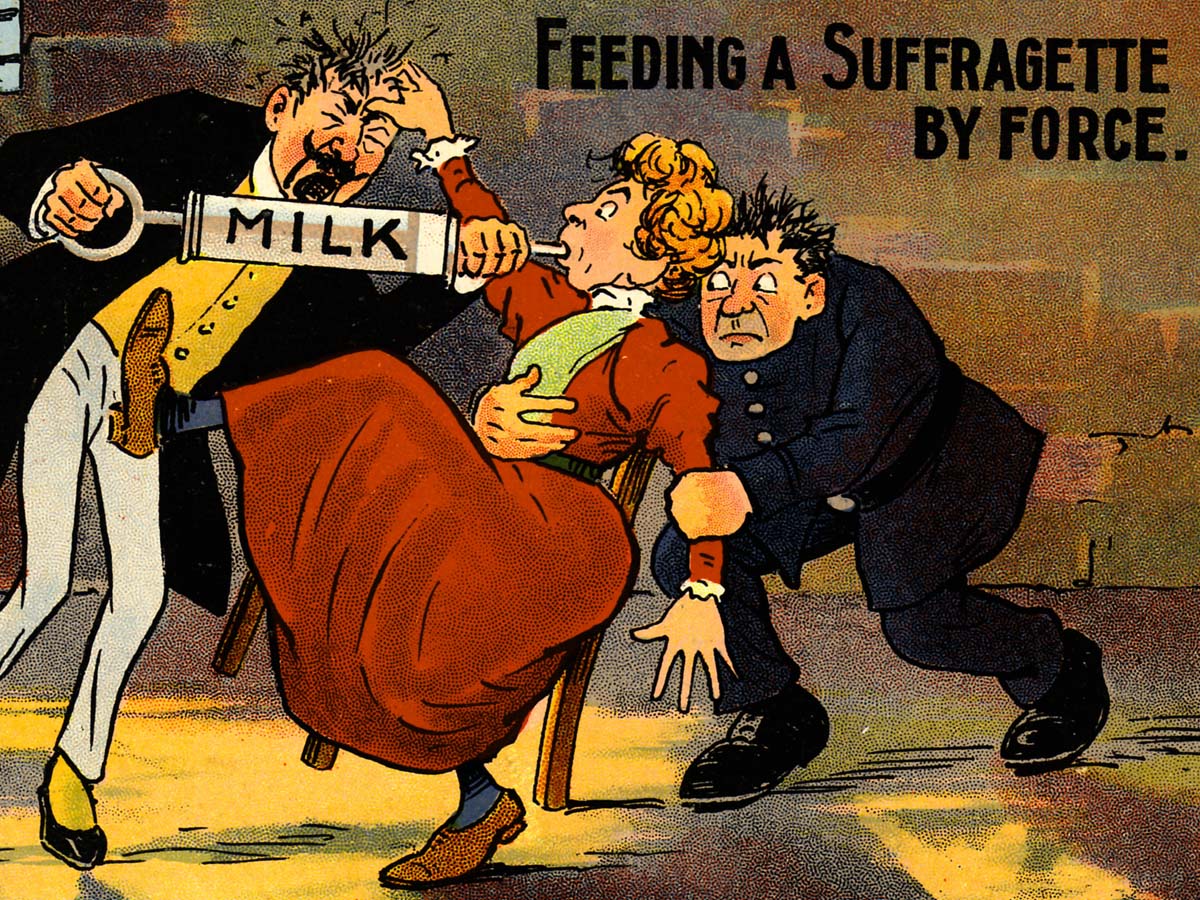
This little cartoon was from the 1900s and depicted the force-feedings we know today to be exorbitantly cruel. The woman is seen to behave childishly while a policeman and a “gentleman” attempt to shove “milk” down her throat. It’s true they were fed milk, but they were also fed eggs and other liquid foods.
Some of the suffragettes suffered broken teeth, bleeding, vomiting, and aspirating food into their lungs. Another famous suffragette, Emmeline Pankhurst, described it by saying, “Holloway became a place of horror and torment. Sickening scenes of violence took place almost every hour of the day, as the doctors went from cell to cell performing their hideous office.”
Rosa May Billinghurst
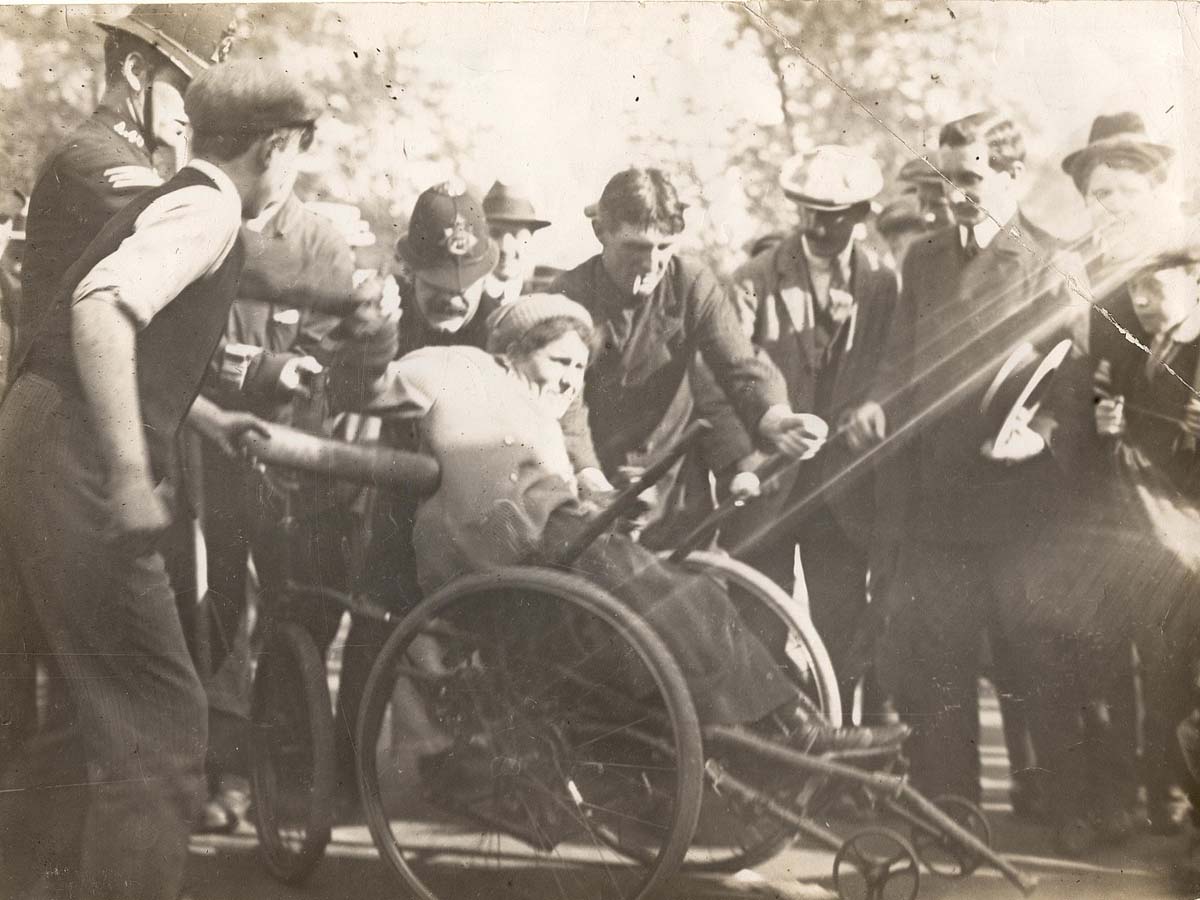
Rosa May Billinghurst was another famous suffragette. She had polio as a child, and it left her unable to work. Regardless, she didn’t let it hold her back. She was very active in social work and taught Sunday School. During Black Friday, the police exploited her disability by throwing her from her wheelchair and taking pieces of it so she couldn’t get back up again.
This wasn’t the first abuse she suffered from the police as a suffragette. She was regularly handled roughly and was one of the women that had been force-fed. They were so violent that she became ill and was released two weeks after the feeding had begun.
Ruth Bader Ginsburg's Death

This sign was to honor Ruth Bader Ginsburg, who passed away on September 18th, 2020. She was certainly a hero to women. While there were other people involved, Ginsburg played a major part in forcing state-funded schools to admit women. She also made sure women could sign a mortgage and get a bank account regardless of whether they had a male to co-sign.
We’re a long way from equal pay, but Ginsburg helped close the gap by dissenting during the pay discrimination case of 2007, Ledbetter v. Goodyear Tire & Rubber Co. RBG was a strong supporter of the women’s right to choose, especially in defending Roe v. Wade. These are just a few of the things she did, but she was replaced with someone that shows to reject these principles.
Ruth Bader Ginsburg's Memorial
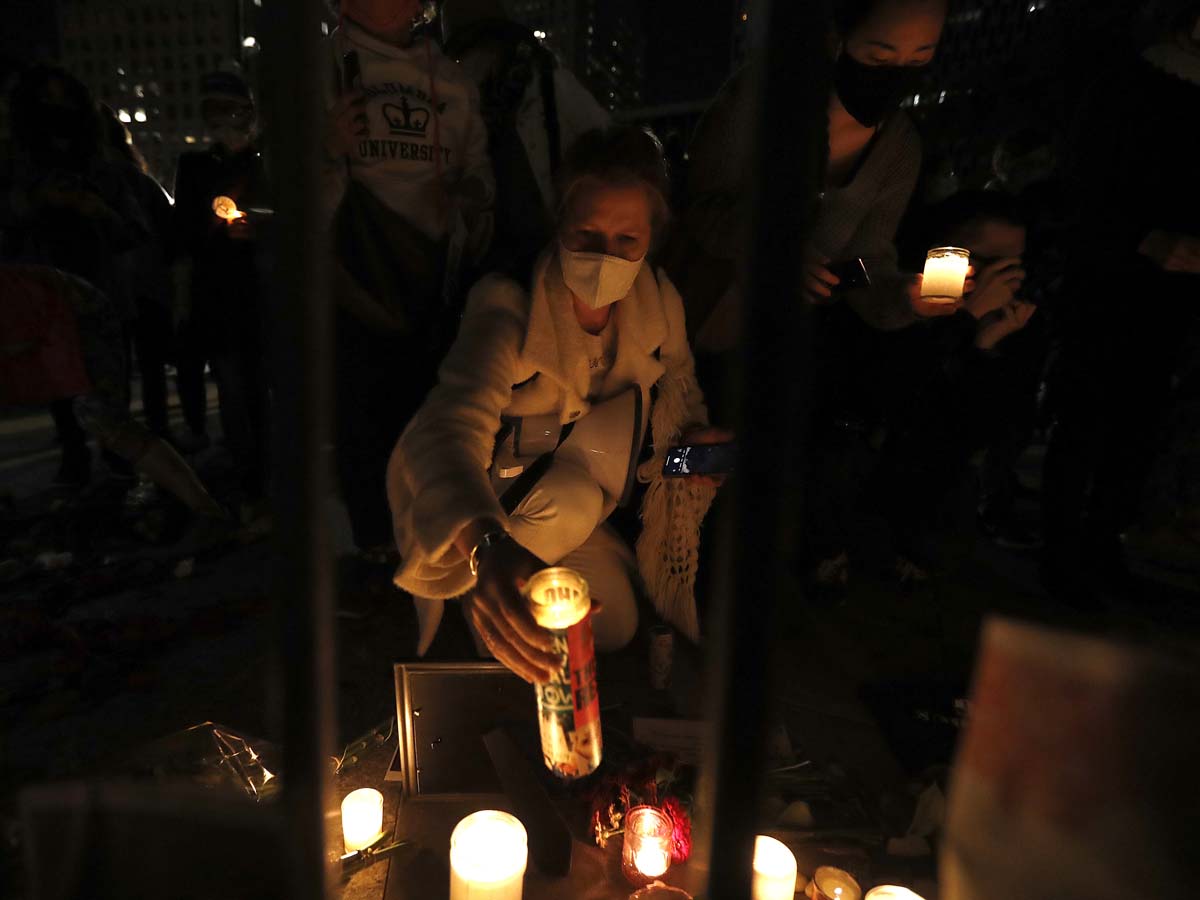
The loss of Ruth Bader Ginsburg was certainly felt around the nation – even the world. She was a voice for those who didn’t have a voice. She was beyond an advocate for gender equality and women’s rights. After her passing, people gathered in front of Foley Square Courthouse to remember everything she’d done.
Ginsburg wasn’t just an advocate for women. She was also a key vote in granting same-sex marriages. It’s no surprise that all genders showed up in droves to support the woman who fought so hard for our nation.
The Coat Hanger's Symbolism
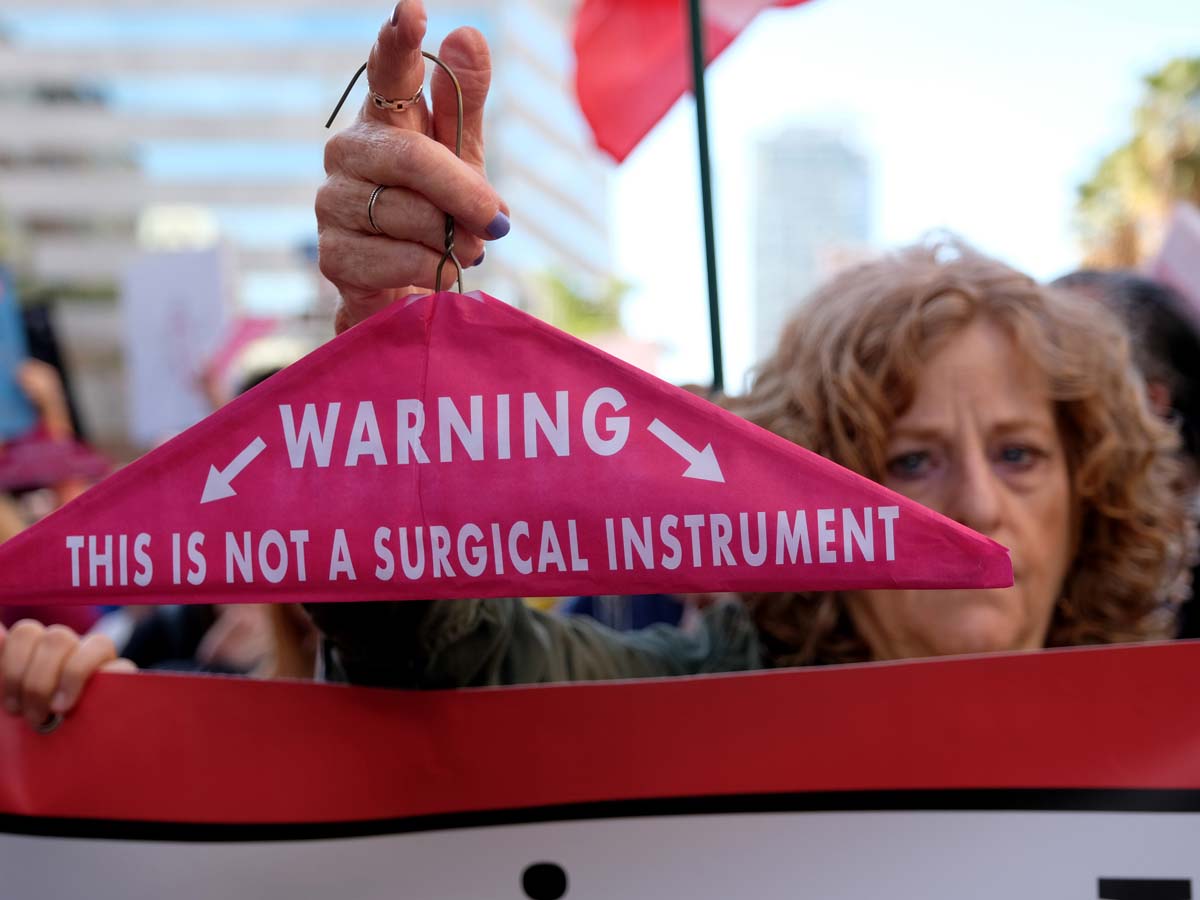
For years, the coat hanger was just something to hold your clothing, but it became a symbol of illegal, back-alley abortions. The Atlantic stated that before safe abortions were readily available, there was an annual death toll of 5,000 women due to black market solutions to pregnancy.
It wasn’t all just the coat hanger, though. Women tried various ways, including hitting themselves in the stomach with a meat pulverizer, throwing themselves down the stairs, spending all night in the snow, swallowing gunpowder, and consuming various poisons. In short, making abortions illegal makes safe abortions illegal. That’s what the coat hanger came to mean.
Weinstein's Trial and Las Tesis

Harvey Weinstein is a famous producer and co-founder of the company Miramax. He is also the same man that was accused of sexually assaulting over 80 women during his career. This sparked the #MeToo movement, which stood to defend women who had been sexually abused and dismissed.
During the trial, a Chilean feminist group, Las Tesis, performed “The Rape Dance.” This dance has become a worldwide phenomenon with lyrics stating that “It wasn’t my fault, nor what I wore, nor where I was.” At the end of the trial, Weinstein was given 23 years in prison.
Pro-Harassment Marches

Occasionally, a “pro-life” movement will march, usually to harass women who need Planned Parenthood’s assistance. The group started at the Basilica of St. Patrick’s Old Cathedral in SoHo and then marched to Planned Parenthood. When there, they harassed women going into the clinic.
During this march, the “pro-life” group was met with Abortion Rights activists. The Abortion Rights activists stand to protect the women who need assistance from Planned Parenthood. There was a line of police officers between the two to ensure there wasn’t any violence.
The Fearless Girl
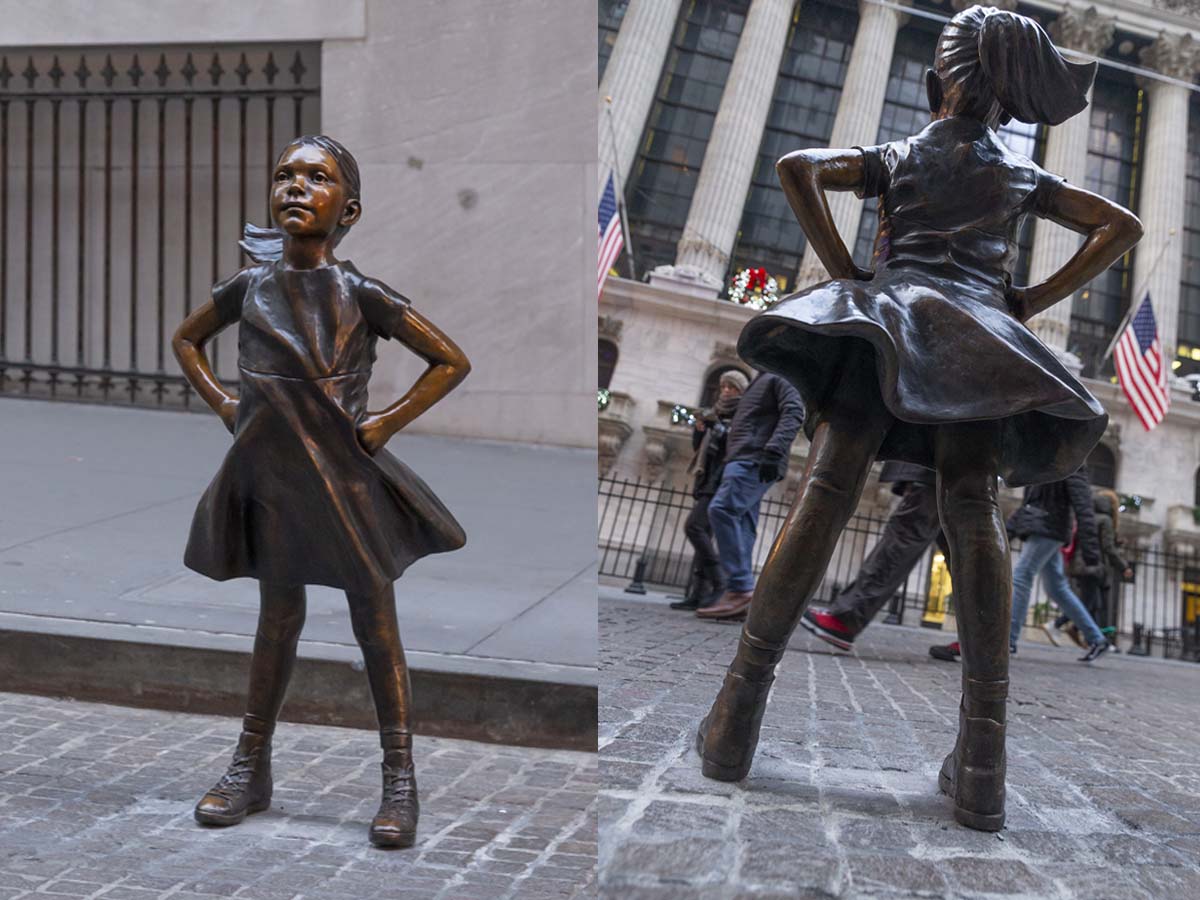
The Fearless Girl statue made the news in 2017 after being placed directly in front of the Charging Bull statue. This little girl was supposed to raise awareness about the importance of gender diversity in corporate leadership.
Sadly, after much uproar, the girl was removed. Afterward, she was placed in front of the New York Stock Exchange. Many people complained, saying that she didn’t have to be moved – she was fine where she was. Regardless, her message is still quite clear.
Brett Kavanaugh vs. Protestors
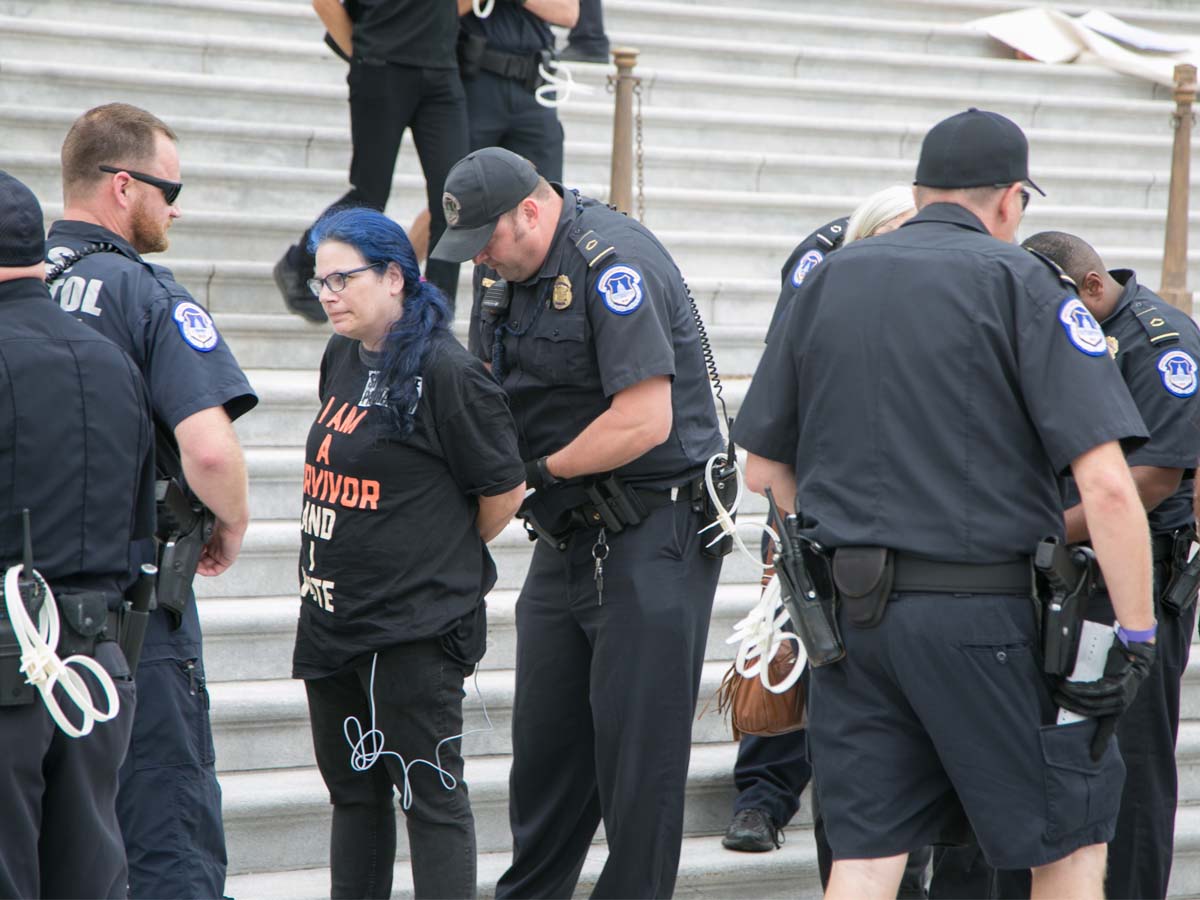
One of Trump’s elected Supreme Court justices was Brett Kavanaugh. The problem is that Kavanaugh allegedly sexually assaulted women when he was in college in 1982. Christine Blasey Ford (one of the three women) stood before the courts and testified, going over everything he’d done to her.
In support of her bravery, women stood outside of the courts, protesting Trump’s pick and the fact the court case was even necessary. While Kavanaugh cried about calendars and beers with the boys – he likes beer – women were being arrested for their peaceful protests.
The J20 Memorial Flag Burning
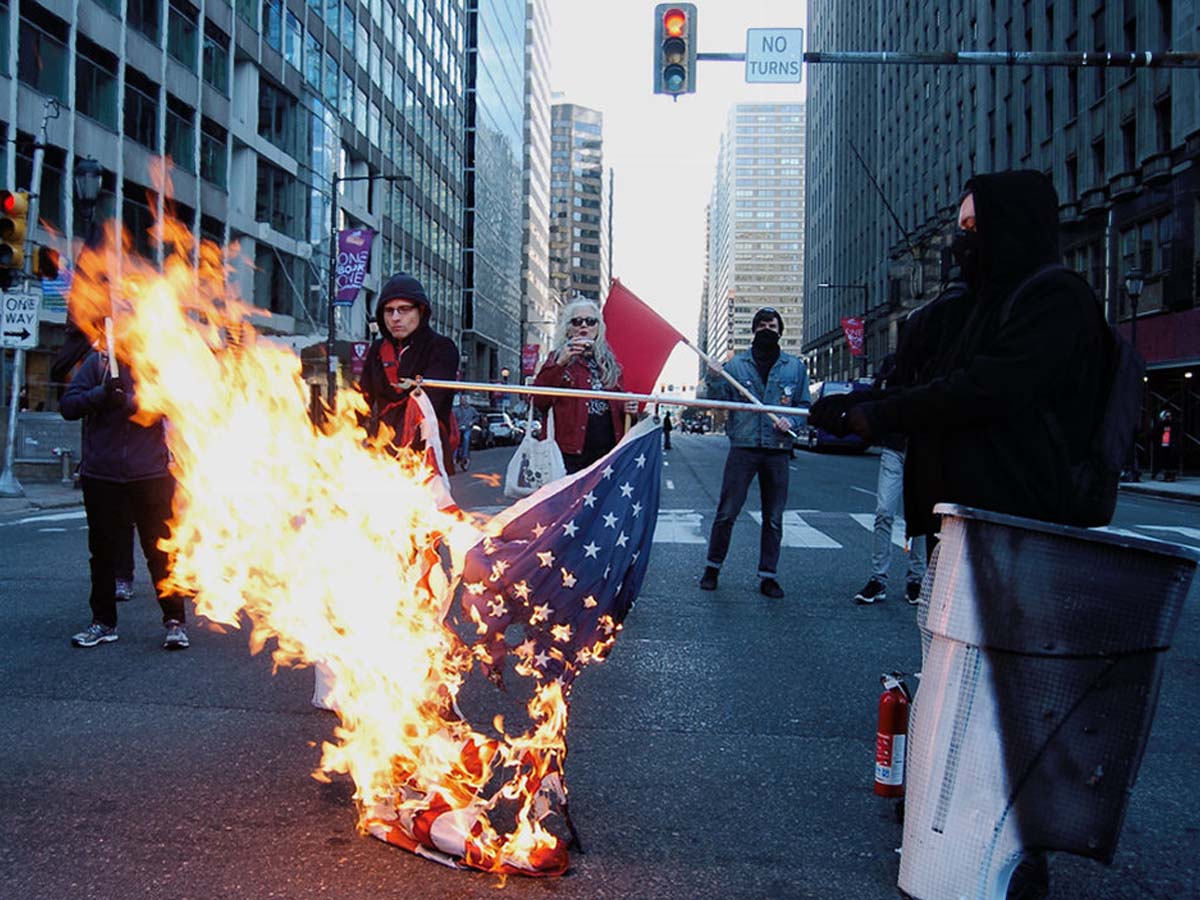
Donald Trump was tough to accept for women, since he has a history of sexually assaulting women – even openly claiming to grab them in inappropriate places.
In response, people protested in the streets. During the inauguration, more than 200 people were arrested and became known as the J20. One year later, this group stands in a major intersection in Philadelphia to show solidarity. It took a full year before charges were dropped against the J20.
LA's Massive Women's March Crowds
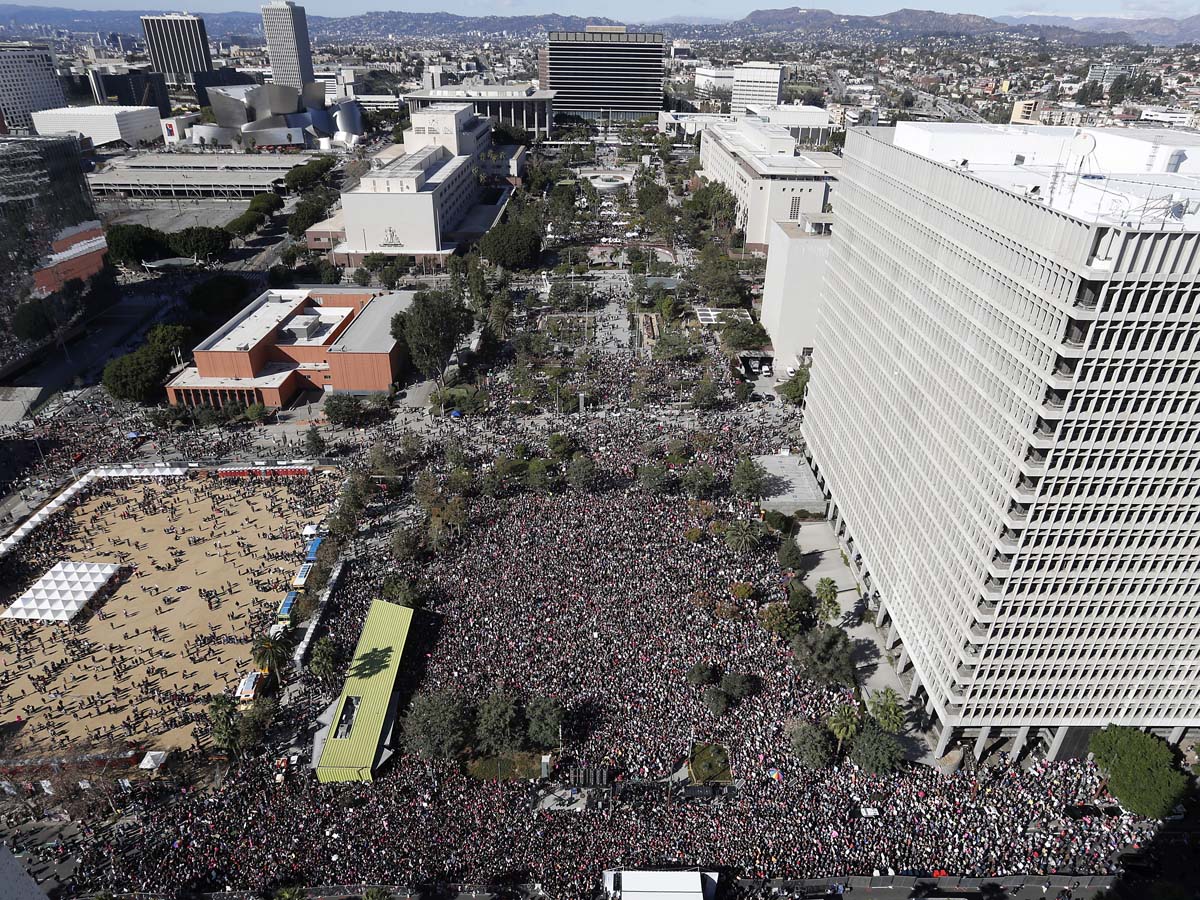
January 20th, 2018 was a very impactful day. This was the day that thousands of protestors converged on Grand Park in downtown Los Angeles. This was a Women’s March designed to rebuke the election and policies of now ex-president Donald Trump.
It was also designed to inform people about the year’s midterm elections, which are equally important (if not more important) as the president. Some estimates say there were over 600,000 who attended.
The Suffragette White House Bonfire
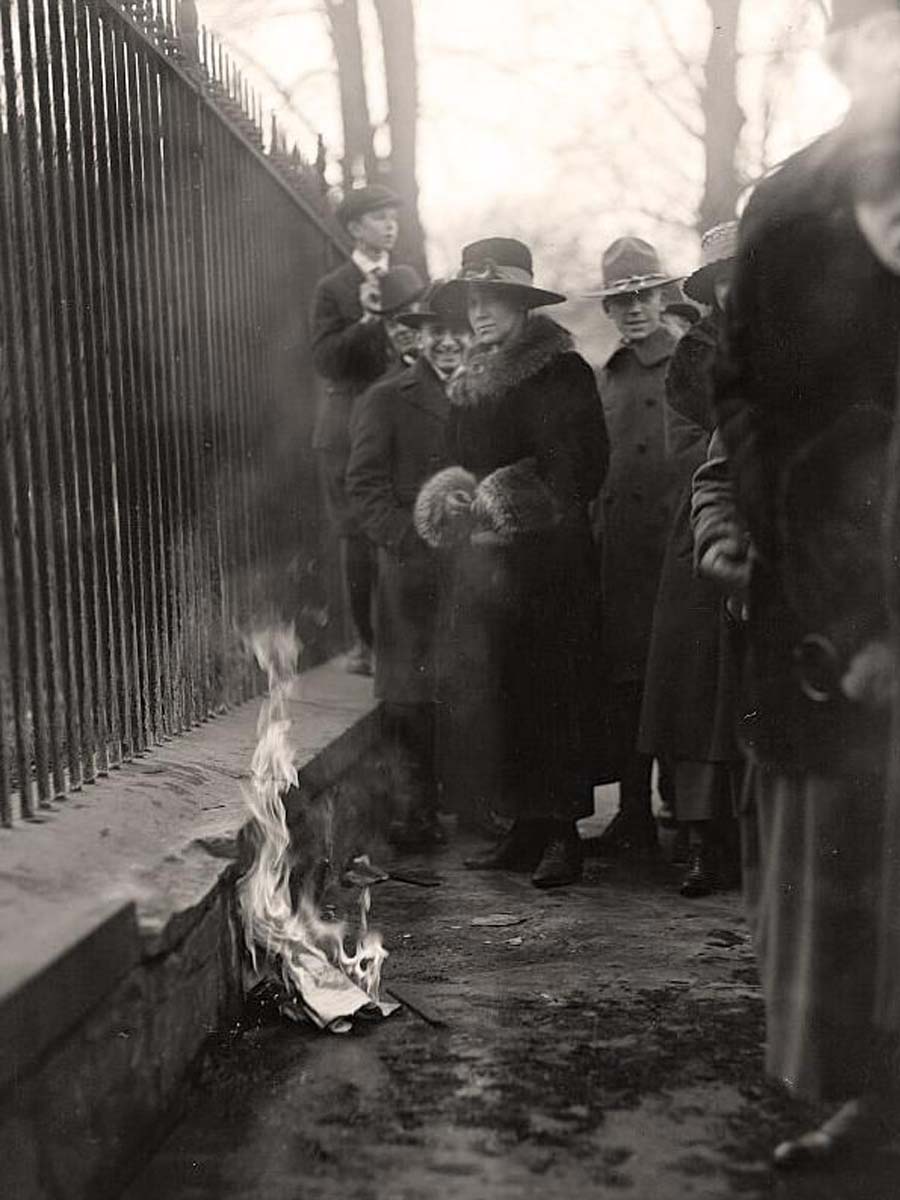
Presidential hypocrisy isn’t a new thing. This image shows suffragettes standing outside of the White House in 1918. The banner calls out Woodrow Wilson’s hypocrisy. He claimed to fight for America and support democracy, but he also denied women the right to vote.
In response, these suffragettes lit a bonfire to gain attention. It clearly worked. Reporters turned out and took photos while assemblers stopped to read the sign. A year later, Congress would pass the 19th Amendment.
A Suffragette in Prison

When women fought for their rights, they were arrested and sent to prison. There were so many that it wasn’t rare to have entire sections reserved for suffragettes. These women were brutally force-fed, but that wasn’t all. Some women were sent to the notorious Occoquan workhouse.
The food was inedible (for those who decided not to go on a hunger strike), the conditions were beyond terrible, and the clothing was purposefully uncomfortable. One night, guards would beat and torture 33 suffragettes, but it just served to support the cause when reporters got wind of it.
Suffragette and Bombs
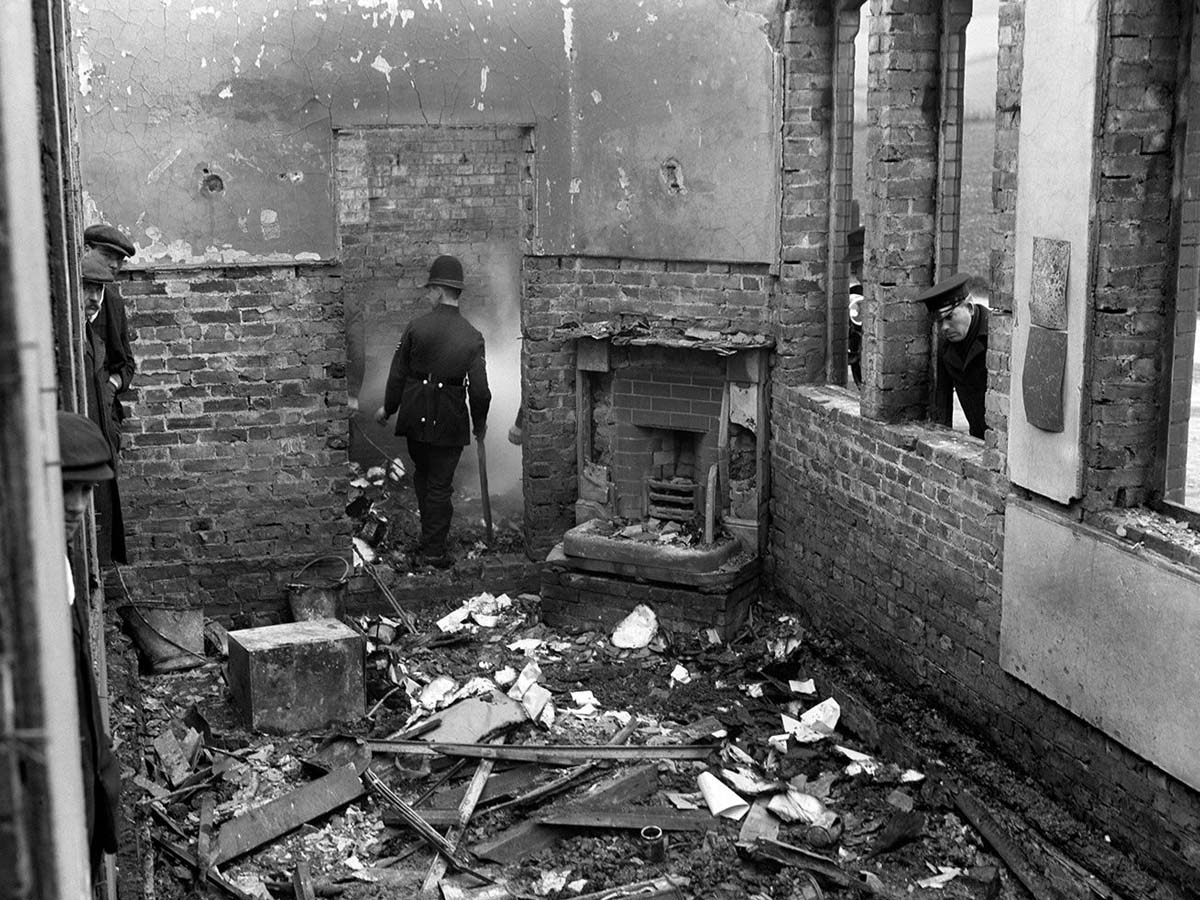
It wasn’t all sunshine, daisies, and signs. After protesting for years and getting very little done, some women had decided to move to more drastic measures. This was when the Women’s Social and Political Union began their bombing and arson campaigns.
WSPU famous figures like Emmeline Pankhurst planned bombing attacks, arson, letter bombs, and assassination attempts. By the end of the campaigns, at least five people were killed, including one suffragette. Another 24 people were injured, including two suffragettes.
Suffragettes Learning Jiu-Jitsu

Because of the regular risk of violence from police and men, suffragettes couldn’t walk around without knowing how to defend themselves. Those who were proud enough to show their association with the movement had to learn jiu-jitsu.
The classes were taught by 4’11” Edith Garrud, a small woman with a secret weapon. She knew jiu-jitsu better than anyone around. She taught fellow suffragettes, especially those in the WSPU, how to fight back when the large policemen got violent.
Children Suffragettes Book
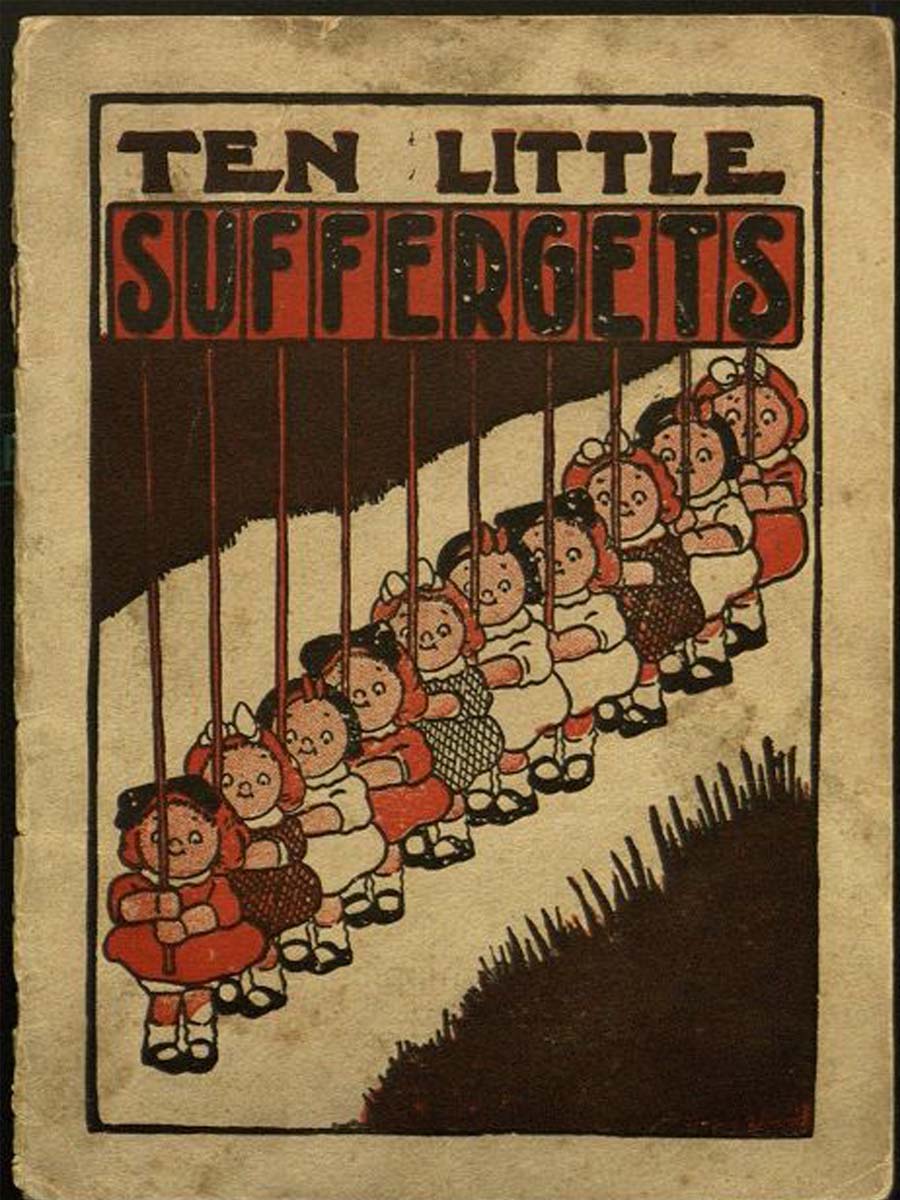
The suffragettes were far from children. They were adult women who were doctors, hard workers, and strong martial artists. Did that stop people from making fun of them? Absolutely not. In this little ad, we see them equated to mere children.
This is just one page of the 1910 anti-suffrage book, where women were equated to actual toddlers wearing their cutest clothing. The book details how the suffragettes go from 10 to none as they kiss boys and run away, decide to pick flowers instead, drown (yes, drown), or just get sleepy.
Abortion Without Apology
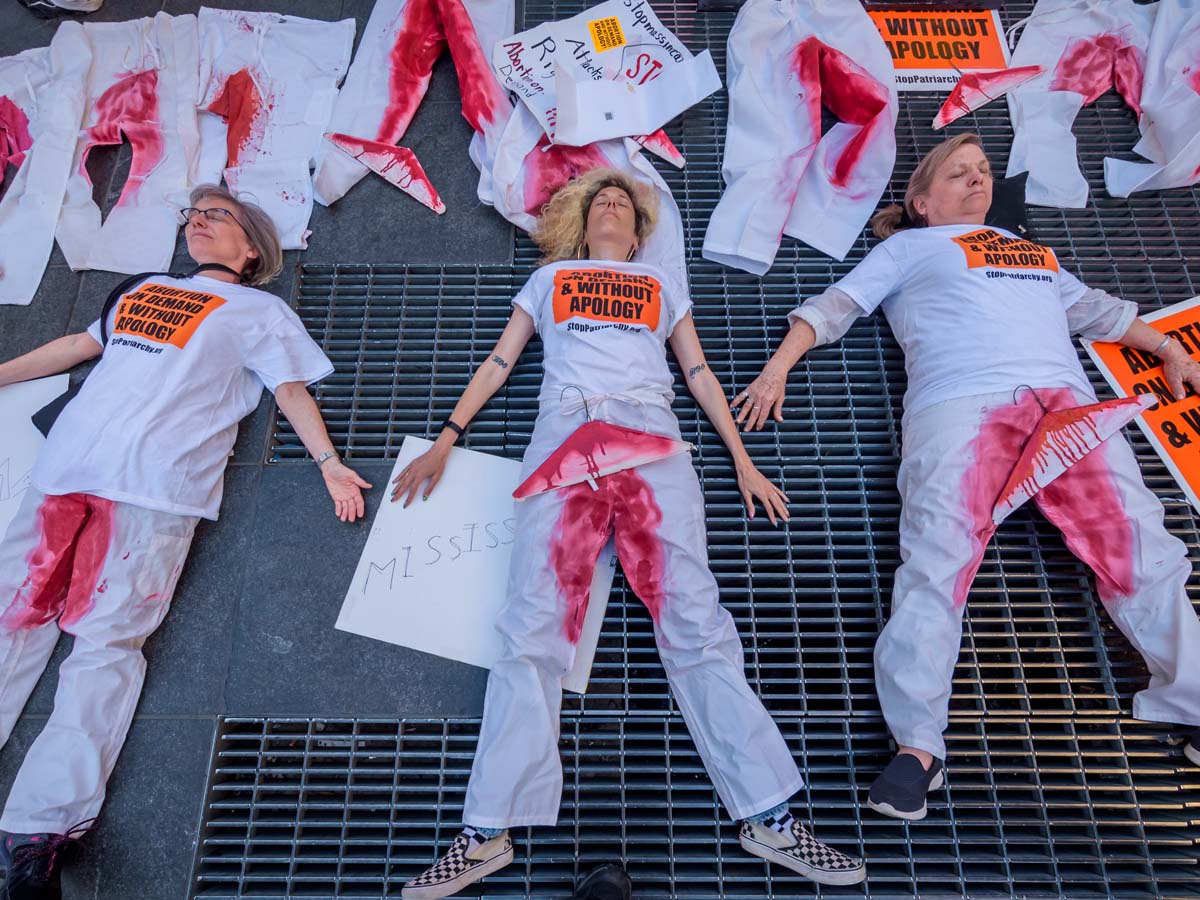
It seems like the government is consistently trying to prevent women from getting access to safe abortions. Banning abortions only bans safe abortions, and that’s what this demonstration was about. Once again, the symbol of a coat hanger is used.
The Guttmacher Institute claims that between 1950 and 1960, illegal abortions were common. While the exact numbers are unknown, there were between 200,000 to 1.2 million per year. The death toll helps us know this as the death toll dropped from at least 2,700 per year to less than 200 just 30 years later.
 Author
Rachel Downs
Last Updated: April 02, 2025
Author
Rachel Downs
Last Updated: April 02, 2025